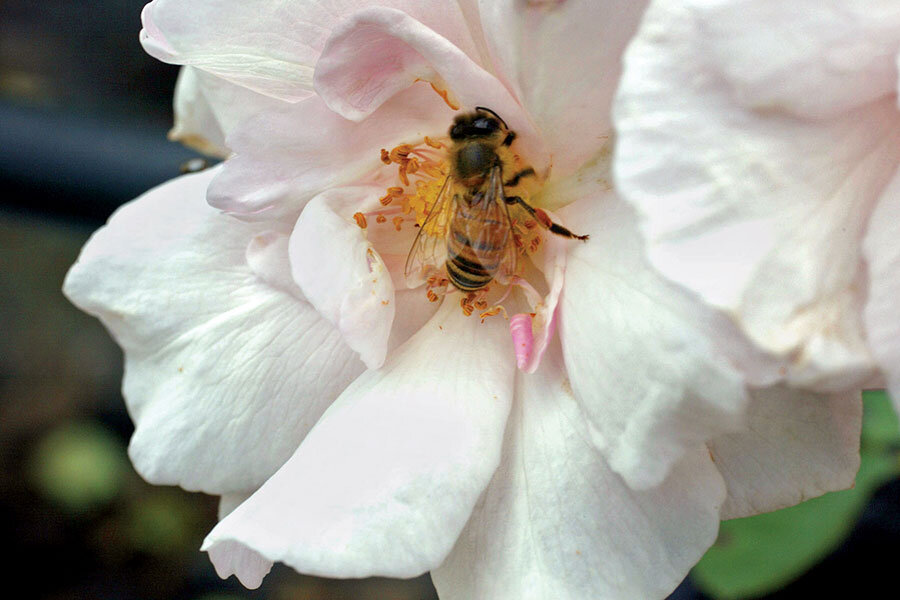Give bees a chance
Loading...
In 2006, an alarm sounded concerning the health of honeybees in the United States when a Florida beekeeper found 400 of his hives were empty. Similar reports of disappearing bees were reported nationwide.
Colony Collapse Disorder, the term given the decline, seems to have no single cause. Parasitic mites, pesticides, immune system issues, stress, and poor nutrition have been cited as possible contributing factors. CCD is considered serious because so many flowering plants – including many food crops – depend on insect pollinators.
Various species of bees, along with moths, butterflies, birds, bats, and other animals, are pollinators. The pollen they move among flowers of the same species results in fertilization, enabling plants to produce blooms, seeds, or fruits.
Home gardeners can play an important role in supporting bees, in particular, by offering food, water, and shelter for them. Even plants in a window box or patio container can help.
Food. Grow a variety of plants to supply nectar and pollen throughout the growing season. Bees are partial to plants native to their habitats, so choose wildflowers and natives whenever possible. Not sure which natives flourish near you? Visit www.pollinator.org, type in your ZIP Code on the Planting Guide page, and download a PDF with recommendations for your area.
Check the plants’ bloom periods (they’re listed in the PDF) so you can plan to have plants in flower from spring until fall. Native plant societies can offer additional guidance.
If natives aren’t readily available, you can find bee-approved choices at most nurseries and garden centers. (Before buying, ask if the plants have been grown with neonicinoids, pesticides that can harm bees.) Pesticide-free verbena, rudbeckia, yarrow, coneflowers, and flowering herbs are all good choices. Catmints are particularly useful because they will bloom deep into fall, with regular trimming. Also check that plants you choose aren’t invasive in your area.
Heirloom plants – daisies, hollyhocks, asters, old-fashioned roses – are especially attractive to bees. (Flat flowers such as daisies and single roses make it easier for bees to collect pollen.) Even vegetables can be part of the plan: Pollinators make a beeline for cucumber and squash flowers.
Entomologists say bees see four colors: yellow, blue, bluish-green (which is how they perceive white), and violet. Bees see red as black. A bee-friendly color palette would include blue, yellow, and purple flowers.
Choose a sunny location and set plants in groups. Again, plan for staggered bloom times so there will be food throughout the growing season. Avoid pesticides that can be toxic to bees.
Water. Although we rarely see them taking a drink, bees appreciate gardens with a source of water. It can be as simple as filling a shallow water dish with small stones and twigs so bees can land and rest while drinking. A birdbath also offers a dependable destination for bees. Replace the water regularly.
Shelter. Don’t ignore the more than 5,000 species of native or wild bees that live in North America. These bees don’t live in hives like honeybees but in logs, dead tree limbs, even in holes in the ground. To encourage these insects, leave an area of bare dirt for ground nesters. You can also build a bee shelter by drilling holes in an untreated wood block. The holes should be three to five inches deep and a quarter inch in diameter. Leave an inch of space between holes. Choose a site protected from wind and rain for your nest – under the eaves of a shed, for example.
By creating an environment with shelter, water, and bee-friendly plants, soon your local pollinators will be buzzing.





